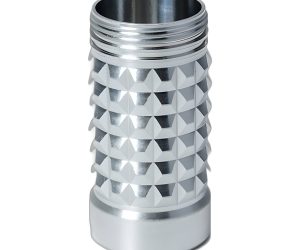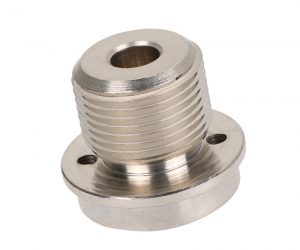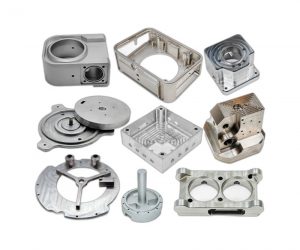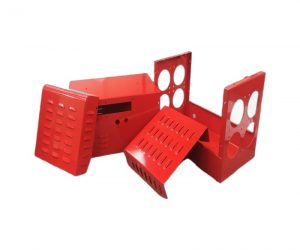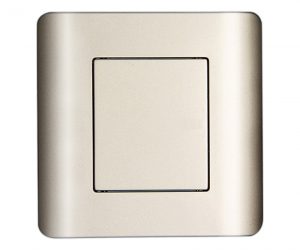The intricate choreography of injection molding hinges upon a complex ecosystem of specialized manufacturers, each contributing critical, often interdependent, components to the final mold. This isn't merely a supply chain; it's a tightly coupled system where failure at any point cascades through the entire process, resulting in compromised part quality, production delays, and significant financial repercussions. Let's dissect the key players and the inherent risks within their domains:
1. The Foundation: Mold Base & Support Structures: The seemingly mundane mold base, fabricated by specialized manufacturers, is far from simple. Precision machining to micron tolerances is paramount, as deviations here propagate exponentially through the mold's geometry. Furthermore, the selection of materials—often hardened steels or specialized alloys—directly impacts the mold's lifespan and resistance to wear, thermal shock, and the corrosive effects of molding compounds. Similarly, support plates and backing plates, often overlooked, are critical for structural integrity and rigidity under the immense pressures of injection molding. A poorly designed or manufactured support system can lead to catastrophic mold failure.
2. The Shaping Elements: Core & Cavity Blocks & Their Entanglements: The creation of core and cavity blocks demands advanced machining techniques, often involving high-speed milling, EDM (Electrical Discharge Machining), and potentially even laser ablation for intricate geometries. The tolerances achieved here directly determine the dimensional accuracy and surface finish of the molded part. Manufacturers must contend not only with the precision of the shaping but also with the inherent stresses introduced during the molding process, requiring sophisticated material science and design considerations to prevent warping or cracking.
3. The Dynamic Duo: Ejection & Cooling Systems: The seemingly straightforward ejection system, composed of pins, sleeves, and actuators, presents a complex interplay of forces and materials. Improper design or material selection can lead to part sticking, damage to the mold, or even catastrophic ejection failures. Similarly, the cooling system, a network of precisely machined channels, dictates cycle times and part quality. Inefficient cooling leads to longer cycle times, increased energy consumption, and potentially warped parts. The design of these systems requires sophisticated fluid dynamics modeling and thermal analysis, often necessitating specialized expertise.
4. Material Flow & Control: Sprue, Runner, & Venting Systems: The sprue and runner system, responsible for directing molten plastic, is critical for uniform filling and minimizing weld lines. Poor design can lead to short shots, air entrapment, and inconsistent part quality. The venting system, often an afterthought, is crucial for releasing trapped gases and preventing defects like burning or voids. Strategic vent placement, requiring deep understanding of fluid dynamics and material behavior, is paramount.
5. Precision & Sealing: Guiding Components, Water Manifolds, O-rings, & Fasteners: Guiding components (pins and bushings) ensure precise alignment of mold halves, preventing flash and wear. Water manifolds, responsible for distributing coolant, necessitate precise machining and robust design to withstand pressure and temperature fluctuations. O-rings and seals, often overlooked, are critical for preventing leaks and maintaining pressure integrity. Finally, seemingly trivial fasteners must withstand immense forces and thermal cycling. The failure of any of these components can lead to significant production disruptions.
Selecting a Manufacturer: A Calculated Risk: Selecting a manufacturer involves a rigorous assessment of their technical expertise, quality control protocols, and track record. It's not merely about price; it's about mitigating the considerable risks inherent in the injection molding process. A thorough due diligence process, including audits of facilities and processes, is essential to ensure the long-term success of any injection molding operation. The cost of a poorly chosen manufacturer far outweighs any perceived short-term savings.
The seemingly straightforward process of injection molding belies a complex interplay of material science, mechanical engineering, and sophisticated control systems. It's not merely the injection of molten polymer into a cavity; it's a precisely orchestrated dance of thermal dynamics, pressure gradients, and shear forces, all culminating in the replication of a design with micron-level precision. The components themselves—the seemingly mundane screws, barrels, and nozzles—are not simply parts, but highly engineered elements operating within a system demanding extreme tolerances and repeatability. Failure at any point in this chain—from the rheological properties of the polymer melt to the micro-geometry of the mold's parting line—can cascade into catastrophic consequences, rendering thousands of parts unusable.
Consider the injection unit: a seemingly simple system, yet its performance hinges on the intricate interplay of screw design (including its geometry, compression ratio, and flight depth), barrel temperature profiling (crucial for melt homogeneity and preventing degradation), and nozzle design (influencing flow characteristics and preventing drool). The clamping unit, far from a mere static fixture, must withstand immense forces while maintaining precise alignment, demanding advanced materials and sophisticated hydraulic or servo-electric actuation. The mold itself, a marvel of precision machining and often incorporating complex cooling channels, is the ultimate arbiter of part quality, its design dictated by factors ranging from draft angles and ejection mechanisms to the intricate details of surface finish and dimensional accuracy. The control system, the nervous system of the entire process, must seamlessly integrate and regulate these disparate elements, adapting in real-time to variations in material properties, ambient temperature, and even subtle variations in the mold itself.
Injection molding component manufacturers are not simply suppliers; they are vital partners in this intricate ecosystem. Their expertise extends beyond mere production; it encompasses material selection, advanced manufacturing techniques (including precision machining, surface treatments, and specialized assembly processes), and a deep understanding of the complex interactions between components and the overall injection molding process. These manufacturers are often intimately involved in design optimization, collaborating with both machine builders and end-users to ensure optimal performance and cost-effectiveness. The reliability of the supply chain, therefore, is not merely a matter of logistics; it's a critical factor determining the success or failure of entire manufacturing enterprises. In essence, the seemingly simple act of creating a plastic part through injection molding represents a sophisticated orchestration of engineering prowess, demanding precision at every stage, from component design to the final product.
Types of Injection Moulding Components and Their Functions
The intricate choreography of injection molding hinges on a complex interplay of four fundamental subsystems, each a microcosm of sophisticated engineering:
1. The Mold: A Crucible of Form and Function: Far from a simple cavity, the mold represents a meticulously engineered landscape. Its two halves – the stationary core and the mobile cavity – are not merely juxtaposed, but precisely interlocked, forming a hermetic seal under immense pressure. This seal, however, is not absolute; strategically placed vents manage the volatile escape of gases generated during the polymerization process, a crucial detail often overlooked in superficial analyses. The mold's internal architecture extends beyond the simple cavity, encompassing a labyrinthine network of channels – conduits for precise temperature regulation, both heating and cooling, essential for controlling the viscosity and solidification of the molten polymer. The design, material selection (often hardened steel alloys or specialized composites), and precision machining of the mold are paramount, directly influencing the fidelity and consistency of the replicated parts. Imperfections here propagate exponentially, resulting in costly defects and production downtime.
2. The Injection Unit: A Thermo-Hydraulic Heart: This subsystem is the dynamic force behind the process, a precisely controlled thermonuclear fusion of polymer chains. The seemingly simple sequence – hopper feed, barrel melting, screw propulsion, nozzle injection – masks a complex interplay of thermodynamics and fluid mechanics. The screw, far from a passive plunger, actively kneads and homogenizes the polymer melt, mitigating shear-induced degradation and ensuring uniform material properties. The barrel's temperature profile is meticulously controlled, a delicate balance between sufficient heat for plasticization and avoidance of thermal degradation. The nozzle, a precision orifice, is subject to extreme temperatures and pressures, requiring robust materials and precise tolerances to prevent leaks and maintain consistent injection flow. The unit's orientation – horizontal or vertical – is not arbitrary but carefully selected based on mold geometry and process optimization.
3. The Clamping Unit: A Vise of Unwavering Strength: This subsystem is the unwavering force that secures the mold halves against the immense pressures generated during injection. The seemingly simple act of clamping masks a sophisticated interplay of mechanical advantage (often through toggle mechanisms) and hydraulic or servo-electric actuation. The clamping force is not a static parameter but a dynamically controlled variable, adjusting to compensate for variations in melt viscosity, mold temperature, and part geometry. Insufficient clamping force leads to flash – unwanted plastic escaping the mold – while excessive force risks mold damage. The precise control and monitoring of clamping pressure and platen movement are critical for consistent part quality and machine longevity.
4. The Control System: An Orchestrator of Precision: This is the central nervous system of the injection molding machine, a sophisticated network of sensors, actuators, and a programmable logic controller (PLC). The PLC receives a constant stream of data from sensors monitoring temperature, pressure, flow rate, and positional feedback, making real-time adjustments to maintain process parameters within tight tolerances. The system's algorithms are not merely reactive; they are predictive, anticipating potential deviations and proactively adjusting parameters to prevent defects. The system's robustness and reliability are paramount, ensuring consistent, high-quality production and minimizing downtime due to malfunctions. This sophisticated control system is the key to unlocking the full potential of the injection molding process.
What are the factors to consider when choosing an injection moulding components manufacturer?
Choosing an injection moulding components manufacturer is not a simple task. There are many factors to consider, such as:
- The quality and performance of the injection moulding components. The injection moulding components should meet the specifications and standards of the injection moulding process, such as the accuracy, precision, durability, and resistance to wear and tear. The injection moulding components should also be compatible with the type and size of the plastic material and the product design.
- The cost and delivery time of the injection moulding components. The injection moulding components should be affordable and competitive in terms of price and value. The injection moulding components should also be delivered on time and in good condition, without compromising on quality and performance.
- The reputation and experience of the injection moulding components manufacturer. The injection moulding components manufacturer should have a good reputation and track record in the industry, with positive feedback and reviews from previous customers. The injection moulding components manufacturer should also have extensive experience and expertise in designing, producing, testing, and servicing injection moulding components.
What are some of the leading injection moulding components manufacturers in the world?
There are many injection moulding components manufacturers in the world, but some of them stand out for their excellence and innovation. Here are some examples:
- Husky Injection Molding Systems: Husky is a global leader in injection moulding systems for a wide range of industries, such as packaging, medical, automotive, and consumer goods. Husky offers high-quality injection moulding components, such as hot runners, controllers, valves, nozzles, and sensors. Husky also provides comprehensive services and support for its customers, such as engineering, training, maintenance, and spare parts.
- Milacron: Milacron is a leading provider of integrated solutions for plastic processing technologies, including injection moulding. Milacron offers a variety of injection moulding components, such as screws, barrels, end caps, nozzles, heaters, thermocouples, and hydraulic cylinders. Milacron also offers customized solutions and technical assistance for its customers.
- Mold-Masters: Mold-Masters is a world-renowned supplier of hot runner technology and temperature control systems for injection moulding. Mold-Masters offers a range of injection moulding components, such as hot runner systems, temperature controllers, valve gates, filters,
and tips. Mold-Masters also offers innovative solutions and engineering services for its customers.
What are the benefits of working with a reputable injection moulding components manufacturer?
Working with a reputable injection moulding components manufacturer can bring many benefits for your business, such as:
- Improved product quality and consistency. By using high-quality injection moulding components that match your product specifications and standards, you can ensure that your products are produced with optimal quality and consistency, reducing defects and waste.
- Increased productivity and efficiency. By using high-performance injection moulding components that optimize your injection moulding process, you can increase your productivity and efficiency, saving time and energy.
- Reduced costs and risks. By using cost-effective injection moulding components that reduce your maintenance and repair expenses, you can reduce your costs and risks, increasing your profitability and competitiveness.
- Enhanced customer satisfaction and loyalty. By using reliable injection moulding components that deliver your products on time and in good condition, you can enhance your customer satisfaction and loyalty, building your reputation and brand.
Conclusion
The intricate dance of molten polymer, precision-engineered steel, and the unforgiving laws of thermodynamics defines injection molding – a process whose ubiquity masks a profound complexity. The performance of this high-stakes manufacturing ballet hinges entirely on the unseen orchestra of components: the meticulously crafted heart of the machine. Selecting a manufacturer for these critical elements is not a mere procurement exercise; it's a strategic decision demanding rigorous scrutiny.
The ramifications of a poorly chosen supplier extend far beyond mere cost. Substandard components introduce insidious vulnerabilities into the production chain, manifesting as unpredictable failures, compromised product quality, and potentially catastrophic downtime – a cascading effect that ripples through profitability, brand reputation, and ultimately, market share. The seemingly minor discrepancy in a nozzle's thermal conductivity, the imperceptible variation in a screw's geometry, or the subtle flaw in a mold's surface finish can translate to exponentially amplified defects in the final product, leading to costly recalls, warranty claims, and a severely eroded competitive advantage.
Therefore, the selection process must transcend superficial metrics like price-per-unit. A comprehensive evaluation demands a deep dive into the manufacturer's capabilities, encompassing their material science expertise, their mastery of precision engineering, their adherence to rigorous quality control protocols (ISO certifications are merely a starting point), their track record of on-time delivery, their capacity for innovation and adaptation to evolving material technologies, and, critically, their demonstrated commitment to sustainable manufacturing practices. Only by engaging with a supplier who embodies these multifaceted attributes can businesses confidently navigate the treacherous currents of modern manufacturing and secure a sustainable competitive edge. The stakes are high; the consequences of complacency, devastating.
